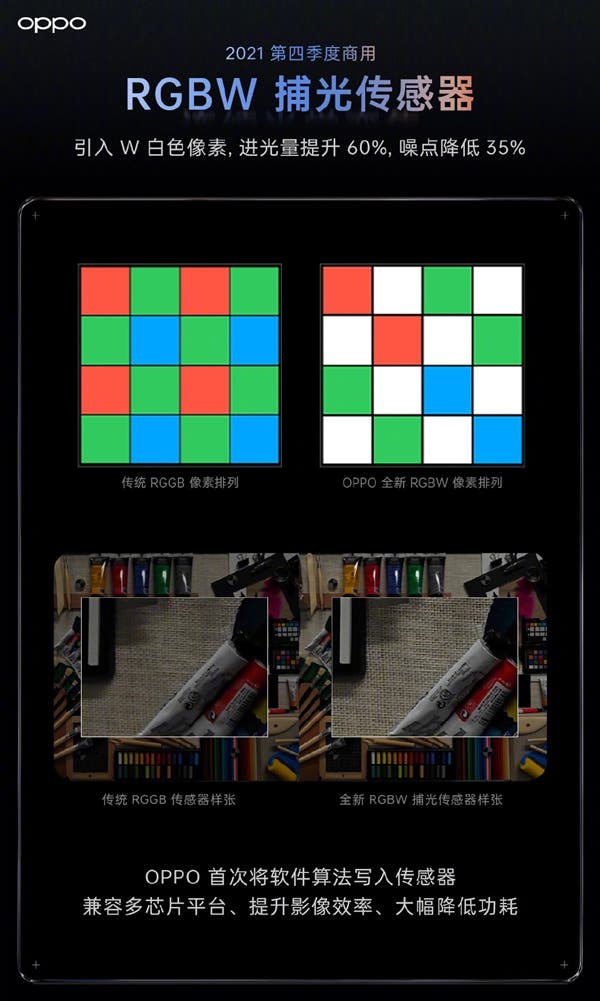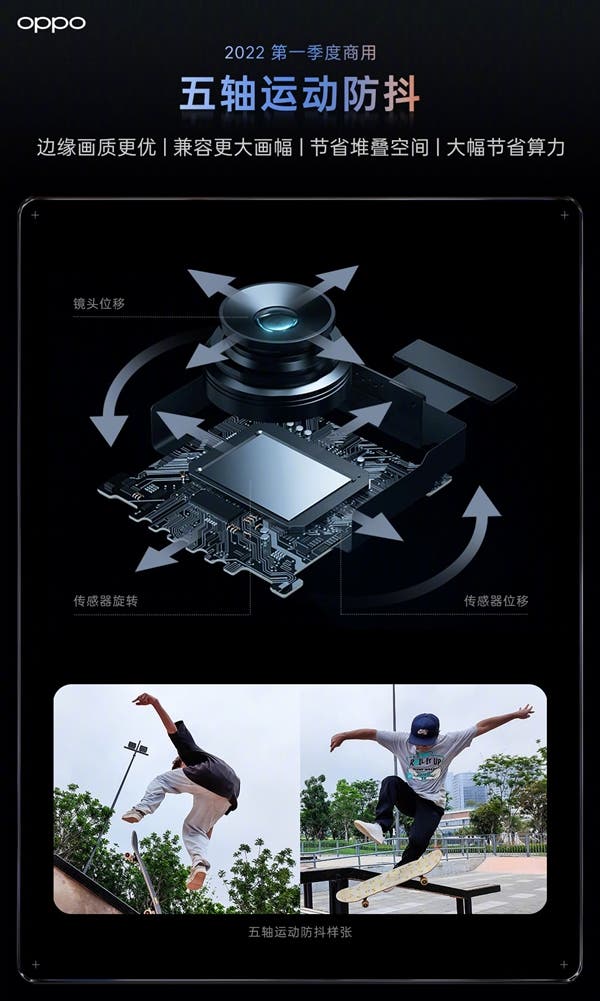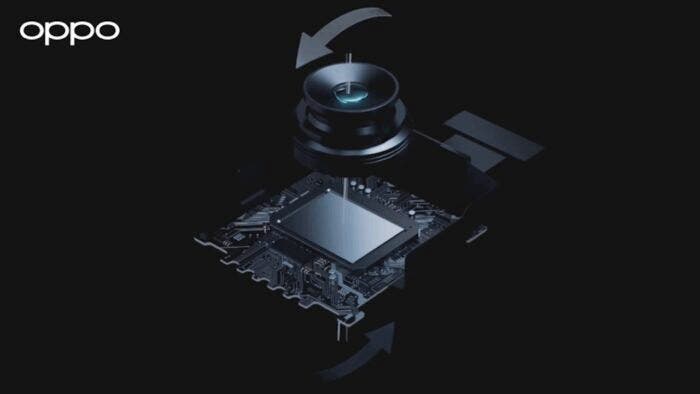Today, OPPO held the Future Imaging Technology conference and introduced some innovative technologies. One of the most interesting techs was OPPO’s RGBW light-trapping sensor.
OPPO’s RGBW Sensor
The so-called RGBW adds a white filter to the three colors of red, blue, and green to form four colors.
We know that each of the red, blue and green filters will filter out part of the light. This reduces the brightness, because the light loss is more.

So adding a white filter, white will not filter the light, making the cast filter irradiate more light on the CMOS. So as the brightness increases, the noise in low-light environments is reduced, thereby improving the night shooting.
Unlike traditional RGBW sensors, OPPO’s RGBW light-catching sensors write imaging algorithms into the sensor hardware for the first time, introducing W white pixels into the traditional RGGB pixel arrangement. This greatly increases the amount of light entering while reducing noise, making dark-light photos brighter and clearer.
More importantly, the RGBW light-harvesting sensor is also compatible with multiple chip platforms. So it not only reduces processing power consumption, but also significantly improves processing efficiency.
OPPO announced that the RGBW light-catching sensor will be officially commercialized in the fourth quarter of this year.
Five-Axis Image Stabilization
Also, at this conference, OPPO announced the industry’s first hardware-level five-axis image stabilization technology. The latter will be commercially available in the first quarter of 2022.
We know that five-axis image stabilization is an important function of motion compensation to compensate for the jitter that occurs during handheld shooting. For this OPPO also offers to rely on five-axis image stabilization function’s detection and compensation correction.

Simply put, five-axis image stabilization means that it can compensate for the five-axis jitter of up and down swing, left and right swing, horizontal displacement, longitudinal displacement, and rotation jitter.
According to OPPO, image stabilization is the basic function of mobile phone imaging. “We integrate optical image stabilization and displacement image stabilization of the sensor to achieve a five-axis image stabilization experience. And we have to say this is close to that of professional cameras. So users can stably capture every moment of movement.”
Honestly, OPPO has not been focusing on camera performance of its phones like VIVO/iQOO and Xiaomi. But the recent development shows that almost all major smartphone makers are actively working on this feature, clearly understanding more and more customers are looking for smartphones that can provide good imaging. In this sense, we should also wait for under-screen camera smartphones from this brand.





